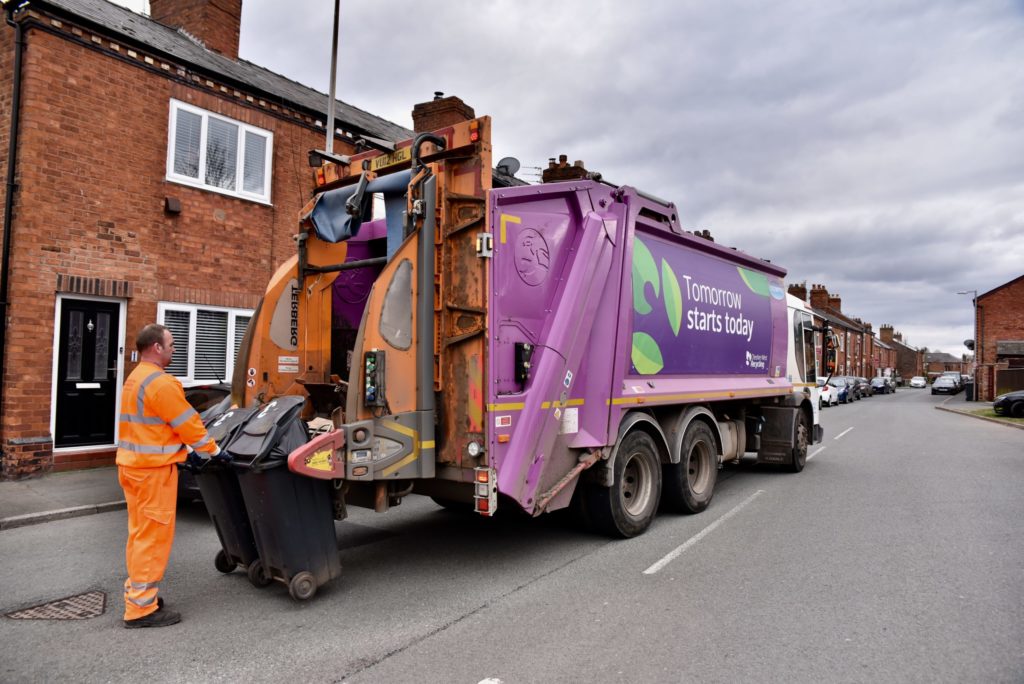Fearful of falling into the same traps of the WEEE directive, where companies invested in infrastructure before guidance has been finalised, the waste industry is pinning its hopes on new guidance set to be released by the Environment Agency this autumn.
Sub-group
In November 2005, a sub-group of the Landfill Regulation Group called the ‘remaining requirements subgroup', was set up to tackle some of the issues associated with the landfill directive. There are around 25 members who sit on the group including Defra, the DTI, the Environment Agency, the ESA, waste management companies and waste producers.
Jason Stringer, regulatory support manager, at Biffa Waste Services, who sits on the group, describes its purpose: “The idea was to bring practical issues and problems to the attention of the Environment Agency. The subgroup aims to set up a clear and enforceable framework for the pre-treatment requirement.”
The landfill regulations state that from 30 October 2007, “landfill is only used for landfilling waste which is subject to prior treatment.” The aim of the requirement according to Defra is to “give the waste industry the opportunity to maximise the value recovered from wastes.”
What ‘pre-treatment' means is explained in greater depth in Regulation 2 of the Landfill Regulations 2002 which says it has to be a physical, thermal, chemical or biological processes (including sorting) that change the characteristics of the waste in order to:
-
reduce its volume or hazardous nature,
-
facilitate its handling
-
enhance recovery
This set of criteria is more commonly know as the ‘three point test'.
In 2005 the Environment Agency released a document ‘guidance for waste destined for disposal in landfills' which included a section on pre-treatment to explain the terms in more detail.
However the wording of the guidance led to even more confusion which Mr Stringer aptly calls ‘linguistic gymnastics' where the industry was trying to make practical sense of the terms.
One example of this is the question of how much material needs to be removed before waste can be considered pre-treated.
Dave Bliss, PPC waste policy manager at the Environment Agency, says: “Although both the Directive and the Regulations define what treatment is, they are both silent on the degree or extent of treatment that is required. It could be argued, therefore, that any treatment that reduces the quantity of waste to be landfilled, even if only by a tiny amount, meets the pre-treatment requirement.”
There are also questions about how much pre-treatment will be necessary – if simple sorting will suffice or will hi-tech treatment incineration or neutralising waste with a high PH value count?
Current Agency thinking appears to be that where waste has passed through a waste treatment plant including thermal, biological or chemical treatment, or mechanical sorting, then the operator can be confident that the waste has been treated. However, where waste has been source segregated or hand sorted, operators should seek evidence, in the form of a declaration from the producer, that a reasonable fraction has been removed or treated so as to “optimise” diversion from landfill.
Interestingly, in the case of municipal waste, the Agency has advised that because specific statutory diversion targets are already in place that local authorities must meet, it will regard their residual waste as already “treated waste”.
Guidance
With the help of the subgroup, the Environment Agency has been working on some more practical guidance, due to be released this October which aims to clear up some of the confusion over the rules.
The Environment Agency said: “It is hoped this information will be available in the autumn in order that any issues can be reviewed by the group and necessary action (particularly with waste producers) identified in good time for next October.”
“Although both the Directive and the Regulations define what treatment is, they are both silent on the degree or extent of treatment that is required.
Dave Bliss, PPC waste policy manager at the Environment Agency
However many people think this guidance will arrive ‘too late'. Nick Walker, manager special projects at Cleanaway, who also sits on the ‘remaining requirements subgroup' says: “It is really disappointing as it is barely a year before the new piece of legislation bites and we still don't have the guidance.” Mr Walker explains that a year in terms of building infrastructure and new systems is totally insufficient – particularly if companies need to gain planning permission.
For the waste management industry, receiving clear guidance from the Environment Agency in October is imperative as at the moment there is still a lot of uncertainty. Mr Stringer explains: “The way the current guidance has been worded has made the waste industry nervous – making multi million pound investment decisions based on very little real legislative backing.”
It is accepted that changes will have to be made by all industries who dispose of waste in order to fulfil the pre-treatment obligations and source segregation will be one solution for waste producers.
Both Biffa and Cleanaway say they will be getting in touch with their customers to explain the pre-treatment requirements and recommend that their customers can either pre-treat the waste themselves or have it sent to the respective companies to be pre-treated at a sorting or other facility.
Enforcement is another area of concern for the waste industry. Dave Bliss, from the Environment Agency says: “Another difficulty that both we and Defra are aware of is that although the duty to ensure pre-treatment lies with the landfill operator, it will normally be the waste producer or other third party holder of the waste who will actually carry out the pre-treatment. It will therefore be difficult, in practice, for the landfill operator to fulfill their duty and for us to ensure compliance.”
In order to tackle this problem, Defra is considering revising the duty of care legislation – a law which says that if waste is passed from one person to another, the person taking the waste must have a written description of it and a transfer note must be filled in and signed by both parties involved.
Biffa hope that the revision of the duty of care legislation will mean that a more detailed form is designed for waste producing companies to describe their waste and declare that it has been ‘pre-treated'. This will ensure there is ‘traceability' for the waste and that the burden does not fall solely on the hands of the landfill operator.
ESA
Sam Corp, policy executive at the Environmental Services Association, agrees: “It is vital that waste producers are clearly responsible for proving that waste has been pre-treated, possibly via the signing of a declaration on a Duty of Care note.” However, Mr Corp expressed concerns regarding the current lack of awareness amongst waste producing companies of the forthcoming pre-treatment requirement. “More effort must be directed at informing and involving waste-producers of their responsibilities and legal duties regarding pre-treatment. ESA's members make huge efforts, but ESA has for many years urged the Government and the Agency to coordinate a national media campaign to inform waste producers of new requirements for the management of waste”
In terms of infrastructure, many companies will need to set up two operating systems as waste is generally delivered to landfills in bulk from transfer stations as well as altering the systems to record whether recycling has occurred and whether it needs to occur.
“More effort must be directed at informing and involving waste-producers of their responsibilities and legal duties regarding pre-treatment”
Sam Corp, Policy executive, ESA
Defra's joint head of waste management licensing and enforcement, John Galvin, advises the waste management industry to: “engage on the pre-treatment requirement at a number of levels. Those operating landfill sites should ensure they are verifying that the wastes they receive are being pre-treated. Waste management companies can also have the opportunity to carry out pre-treatment at a range of different treatment facilities.
“Waste management companies are also best placed to advise waste producers on ways to minimise waste or to keep different waste fractions separate where these can be usefully recycled.”
Hopefully the new guidance, focussing on practical implementation will help the industry make informed business decisions. Such a view is expressed by Nick Walker who said he hoped that: “the Agency would take a relatively proportionate approach to the implementation of the pre-treatment requirement. Alongside this we will of course need to ensure that the industry's customers are made fully aware of the need for pre-treatment.”










Subscribe for free